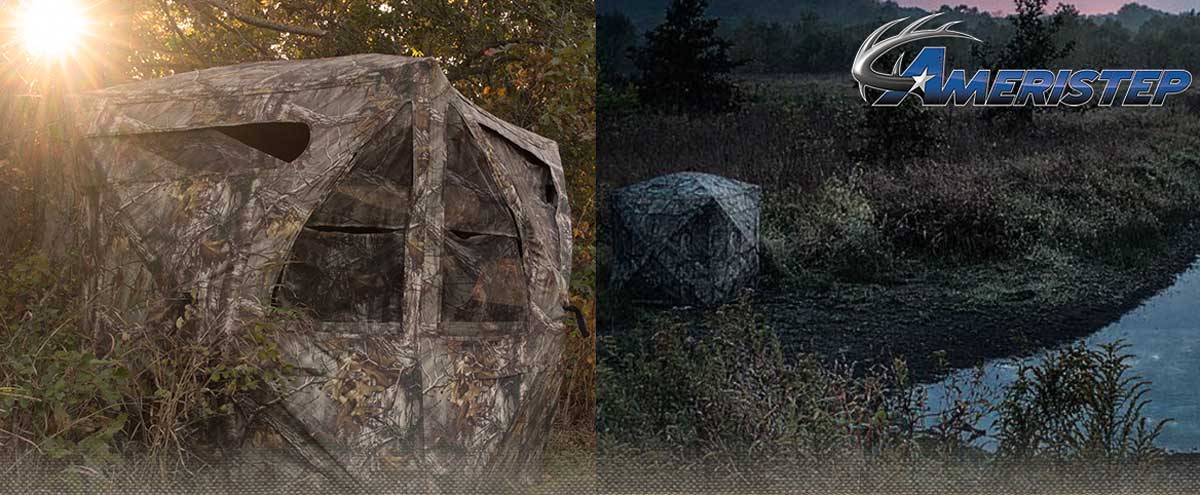This was my client’s first archery elk hunt and, hailing from the East Coast, he was much more at ease above terra firma in a treestand than at ground level with a screaming bull elk. This was clearly evident when he rose to his feet and cast me a fearful look, causing the approaching bull to halt at 20 feet and execute a quick 180 back the way he had come. I knew that look, and that feeling. It was the same mix of fear and confusion that overtook me the first time I had a furious bull within a stone’s throw. But we only had a few days to hunt and had just blown the best opportunity of the week to fill his elk tag.
This particular bull had been traveling from his bedding ground in national forest to feed in an alfalfa field nearly every evening, often staying until daylight. I decided plan B was to set up a ground blind in the narrow sagebrush corridor between the forest and the hayfield. My hope was a blind would give him confidence in the face of an up-close bull and conceal him drawing the bow. We erected the pop-up blind beneath a lone juniper, and my client settled in hoping the bull would return that evening. I figured he was more likely to be calm and collected if he were by himself in the blind.
I had a perfect vantage point from atop a hill a quarter-mile away and watched everything unfold through the binoculars. Pronghorns came into the field first and were clearly wary of the blind. They kept their distance—a good 100 yards out. A small band of mulie does were indifferent to the blind and casually fed a half-football field in front of it. Then the bull emerged and began easing his way toward the blind, cautiously surveying his surroundings, his heightened awareness likely due to this morning’s encounter with us. I wasn’t sure my client could see the bull due to the topography. This question was answered when a modest mule deer buck quickly entered the scene. My client promptly arrowed it (he had a valid mule deer buck tag as well). As elated as he was to take his first mule deer, I didn’t bother telling him about the bull that was headed his way.
FOR THOSE UNCOMFORTABLE IN THE AIR
Being afraid of heights myself, I’m much more inclined to use a ground blind than a treestand, though I know that sitting in the latter can be a very effective method of bowhunting elk. There are dozens of 360-degree pop-up blinds on the market that will completely conceal a hunter. Once your pop-up blind is set up, it can be left up and will eventually become interpreted by most wildlife as just another piece of the landscape. Use brush and trees to break up the blind’s outline. Also, try using shoot-through netting on your windows. Elk seem to pick out the large black holes easily and get spooked from this foreign shape.
WHEN PORTABILITY IS KEY
If you are hiking in a good distance or are concerned about busting elk, there are some blinds available that are extremely small and lightweight, especially roofless models that allow for more shooting lanes. I made one of these out of chicken wire, 3-foot lengths of PVC pipe and camouflaged netting that has served me for years on hunts for turkeys, pronghorns, deer and elk. This homemade porta-blind cost me about $10, rolls up in my pack and unfolds to conceal me from three directions—maybe not as effective as a pop-up, but I’m claustrophobic anyway. (And afraid of heights? Hey, I had a rough childhood.)
The corridor where my client killed his buck, between the forest and private hayfield, was an ideal location to set up a blind. A well-used elk wallow is also hard to beat, especially during warm weather and the apex of the rut. A game trail running between feeding areas and early morning bedding grounds is a dynamite place to be concealed.
Whether you go with store-bought or home-grown, ground blinds are just another one of those tools that’s nice to have in your elk hunting bag of tricks
